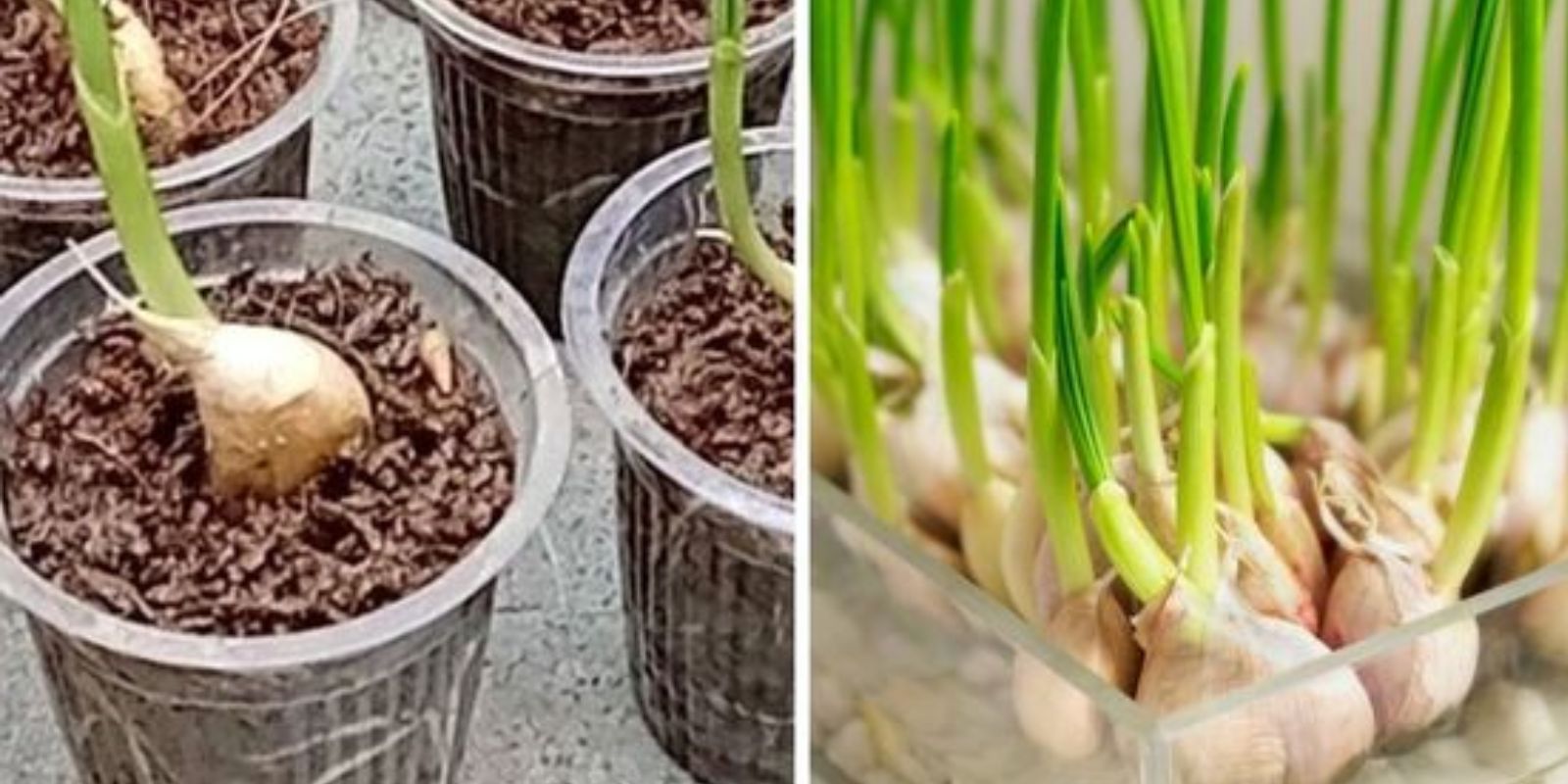Growing garlic in containers offers a convenient and rewarding way to enjoy a steady harvest of fresh, flavorful bulbs right from your garden or patio. This article explores the benefits of container gardening for garlic, step-by-step instructions for cultivation, tips for successful growth, and harvesting techniques to ensure a bountiful supply year-round.
Introduction
Garlic (Allium sativum) is not only a staple in culinary dishes but also a versatile plant that thrives well in containers. Whether you have limited garden space or want to control soil conditions more effectively, growing garlic in pots allows you to nurture healthy bulbs and enjoy their robust flavor in various dishes. This article guides you through the process of cultivating garlic in containers, providing insights into soil preparation, planting techniques, maintenance, and harvesting.
Benefits of Growing Garlic in Containers
Container gardening offers several advantages for growing garlic:
- Space Efficiency: Ideal for small gardens, balconies, or urban settings where space is limited.
- Soil Control: Enables precise control over soil quality, drainage, and nutrient levels.
- Portability: Containers can be moved to optimize sunlight exposure and protect plants from adverse weather conditions.
- Pest Management: Easier to monitor and manage pests compared to traditional garden beds.
- Continuous Harvest: Provides a steady supply of fresh garlic throughout the year with proper planting schedules.
Steps to Grow Garlic in Containers
1. Selecting Containers
- Size: Choose large containers with a depth of at least 12 inches to accommodate garlic bulbs’ growth.
- Material: Opt for durable containers made of plastic, ceramic, or wood with drainage holes to prevent waterlogging.
- Quantity: Allocate one bulb per 8-inch diameter container for optimal spacing and growth.
2. Preparing Soil
- Mix: Use well-draining potting mix combined with compost or aged manure to enrich soil fertility.
- pH Level: Aim for a slightly acidic to neutral pH (6.0-7.0) for optimal garlic growth.
- Fertilization: Incorporate a balanced fertilizer or organic amendments into the soil before planting to provide essential nutrients.
3. Planting Garlic
- Cloves Selection: Use large, healthy garlic bulbs purchased from a reputable source or saved from previous harvests.
- Preparation: Separate cloves from the bulb but keep the papery skin intact.
- Planting Depth: Plant cloves with the pointed end up, about 2 inches deep, and space them 4-6 inches apart within the container.
- Covering: Gently cover the cloves with soil, leaving the top of each clove exposed to facilitate sprouting.
4. Watering and Maintenance
- Watering Schedule: Keep the soil consistently moist but not waterlogged, especially during dry periods and bulb formation.
- Mulching: Apply a layer of mulch such as straw or shredded leaves to retain moisture and regulate soil temperature.
- Fertilizing: Feed garlic plants with a balanced fertilizer every 3-4 weeks or use organic options like compost tea to promote growth.
5. Monitoring Growth and Care
- Sunlight: Place containers in a location receiving full sunlight (6-8 hours daily) for optimum growth and bulb development.
- Weeding: Remove weeds regularly to prevent competition for nutrients and moisture.
- Pest Control: Monitor for pests such as aphids or onion flies; use organic pest control methods if necessary.
6. Harvesting Garlic
- Timing: Harvest garlic bulbs when the leaves turn yellow and begin to dry, typically 8-10 months after planting.
- Digging Up Bulbs: Use a garden fork to gently loosen the soil around each bulb, being careful not to damage the cloves.
- Curing: Allow harvested bulbs to cure in a dry, well-ventilated area for 2-3 weeks to enhance flavor and storage life.
- Storage: Store cured garlic bulbs in a cool, dry place with good airflow, ensuring they remain firm and flavorful for several months.
Tips for Successful Container Garlic Gardening
- Rotate Crops: Rotate garlic planting locations each year to prevent soil depletion and reduce disease risks.
- Temperature Considerations: Protect containers from extreme heat or frost by moving them to a sheltered location as needed.
- Companion Planting: Pair garlic with companion plants like herbs or vegetables that benefit from its pest-repelling properties.
- Seasonal Care: Adjust watering and fertilization schedules based on seasonal weather patterns and plant growth stages.
Conclusion
Growing garlic in containers offers a practical and rewarding gardening experience, providing a continuous supply of fresh, flavorful bulbs for culinary use. By following these comprehensive steps and tips, you can successfully cultivate healthy garlic plants in pots, regardless of your gardening experience or space constraints. Embrace the joys of homegrown garlic, enhance your culinary creations, and enjoy the satisfaction of sustainable gardening practices with container-grown garlic.
This article provides a thorough guide to cultivating garlic in containers, emphasizing sustainable practices, and ensuring a continuous harvest of flavorful bulbs throughout the year.

